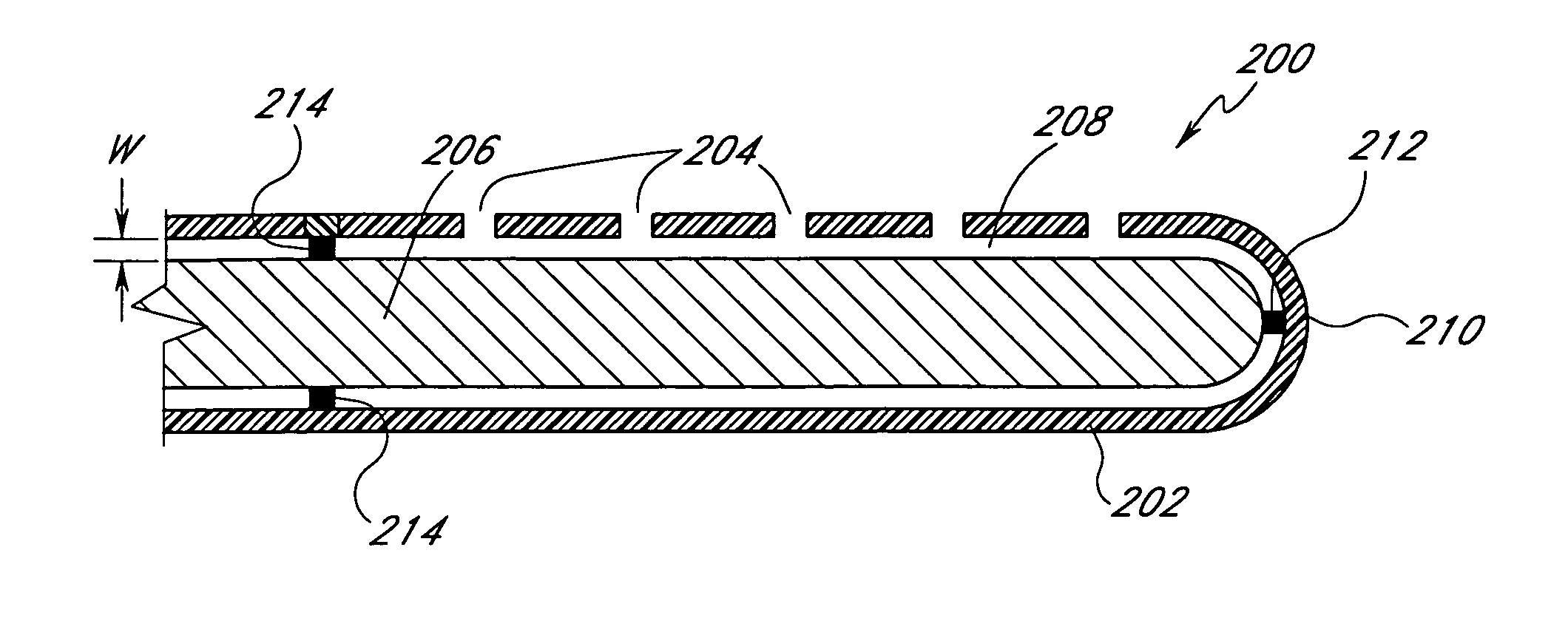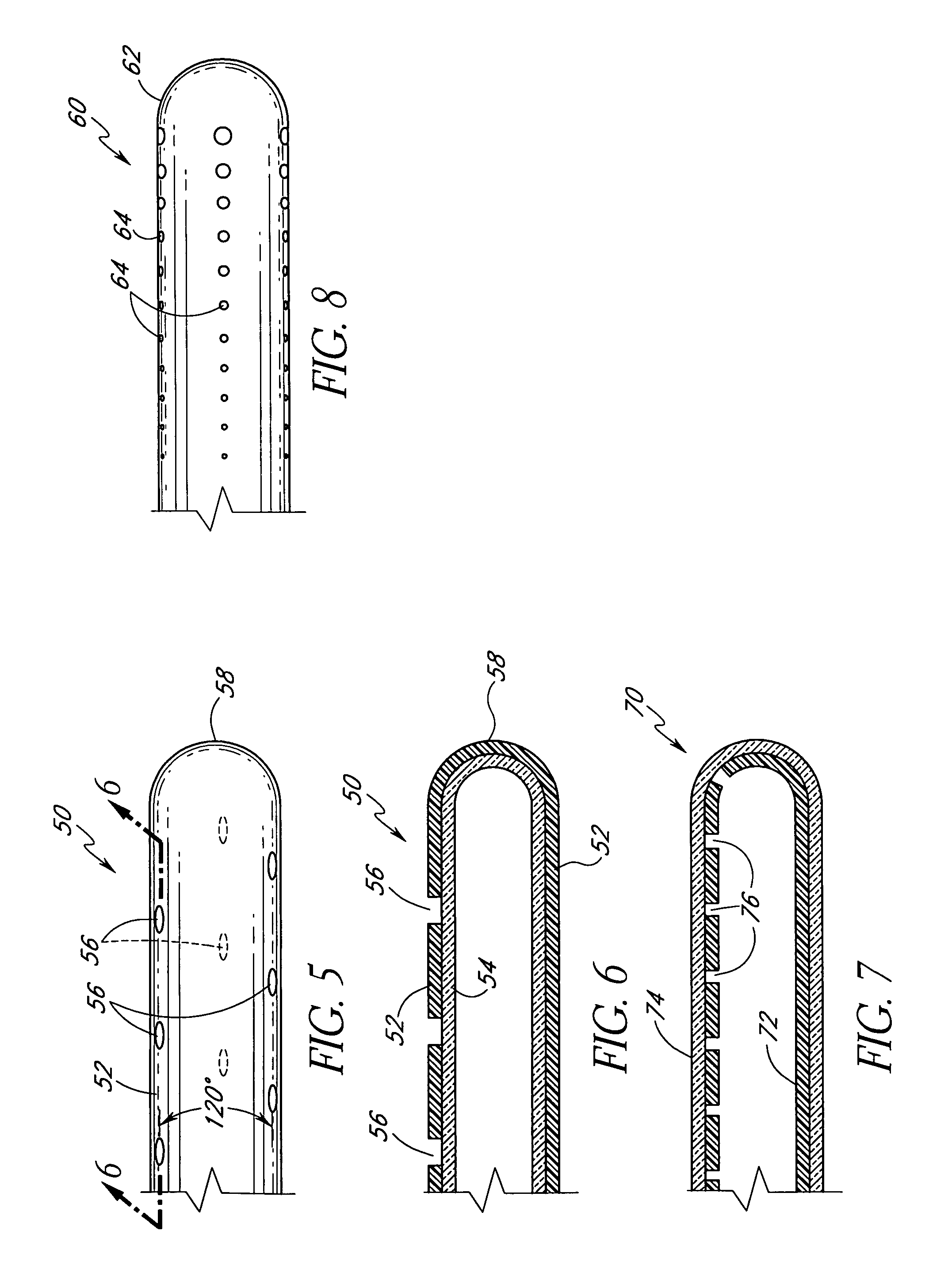Catheter for uniform delivery of medication
a catheter and uniform technology, applied in the field of catheters, can solve the problems of uneven fluid flow rate through the exit hole, uneven fluid flow rate, and inability to provide uniform fluid flow along the infusion section of the catheter, etc., and achieve the effect of uniform rate, convenient manufacturing and advantageous simplicity
- Summary
- Abstract
- Description
- Claims
- Application Information
AI Technical Summary
Benefits of technology
Problems solved by technology
Method used
Image
Examples
Embodiment Construction
[0045]FIGS. 1-4 illustrate an infusion catheter 20 according to one embodiment of the present invention. Catheter 20 preferably includes a flexible support 22 (FIGS. 2-4), a non-porous membrane 24, and a porous membrane 26. The membranes 24 and 26 are wrapped around the support 22 to form a plurality of axial lumens between the inner surfaces of the membranes 24 and 26 and the surface of the support 22, as described in greater detail below. The non-porous membrane 24 defines a non-infusing section 28 of the catheter 20, and preferably covers the support 22 from the proximal end thereof to a point 30, shown in FIG. 1. Similarly, the porous membrane 26 defines an infusion section 32 of catheter 20, and preferably covers the support 22 from the point 30 to the distal end of support 22. Alternatively, the catheter 20 may be configured without a non-porous membrane 24. In this configuration, the porous membrane 26 covers the entire length of the support 22, so that the entire length of t...
PUM
 Login to View More
Login to View More Abstract
Description
Claims
Application Information
 Login to View More
Login to View More - R&D
- Intellectual Property
- Life Sciences
- Materials
- Tech Scout
- Unparalleled Data Quality
- Higher Quality Content
- 60% Fewer Hallucinations
Browse by: Latest US Patents, China's latest patents, Technical Efficacy Thesaurus, Application Domain, Technology Topic, Popular Technical Reports.
© 2025 PatSnap. All rights reserved.Legal|Privacy policy|Modern Slavery Act Transparency Statement|Sitemap|About US| Contact US: help@patsnap.com



